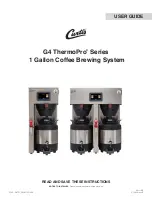
Beta Draft Confidential
Configuring ATM Traffic Descriptors
About TDs
ATM Services Configuration Guide for CBX 3500, CBX 500, GX 550, and B-STDX 9000
1/19/05
12-5
The TD combination you select determines the number and type of cells that are
admitted into a congested queue, and whether or not high-priority cells are tagged as
low-priority cells when traffic exceeds the traffic parameter thresholds.
You can configure up to 512 TDs per switch.
lists the TDs that are
available for each QoS class.
SCR
SCR is the maximum average cell transmission rate that is allowed over
a given period of time on a given circuit. It allows the network to
allocate sufficient resources (but fewer resources than would be
allocated based on PCR) for guaranteeing that network performance
objectives are met. This parameter applies only to variable bit rate
(VBR) traffic; it does not apply to CBR or UBR/ABR traffic.
MBS
Maximum burst size is the maximum number of cells that can be
received at the PCR. This allows a burst of cells to arrive at a rate higher
than the SCR. If the burst is larger than anticipated, the additional cells
are either tagged or dropped. This parameter applies only to VBR
traffic; it does not apply to the CBR or UBR traffic.
MCR
(CBX 500 with
FCP support
only)
Minimum cell rate (MCR) is the rate at which the source switch is
always allowed to send data. This parameter only applies to ABR traffic.
For more information about FCP features, see
Tagging
Tagging refers to the method of changing a high-priority cell (CLP=0) to
a low-priority cell (CLP=1). This method provides an alternative to
simply dropping the cells from the cell stream, when the CLP=0 cell
stream is non-conforming.
Best Effort
This option means that the network attempts to deliver traffic that
exceeds the limits of the traffic contract. However, there are no
guarantees that traffic will be delivered.
Table 12-2.
Traffic Parameters (Continued)
Traffic
Parameter
Description
Содержание CBX 3500
Страница 888: ......
















































